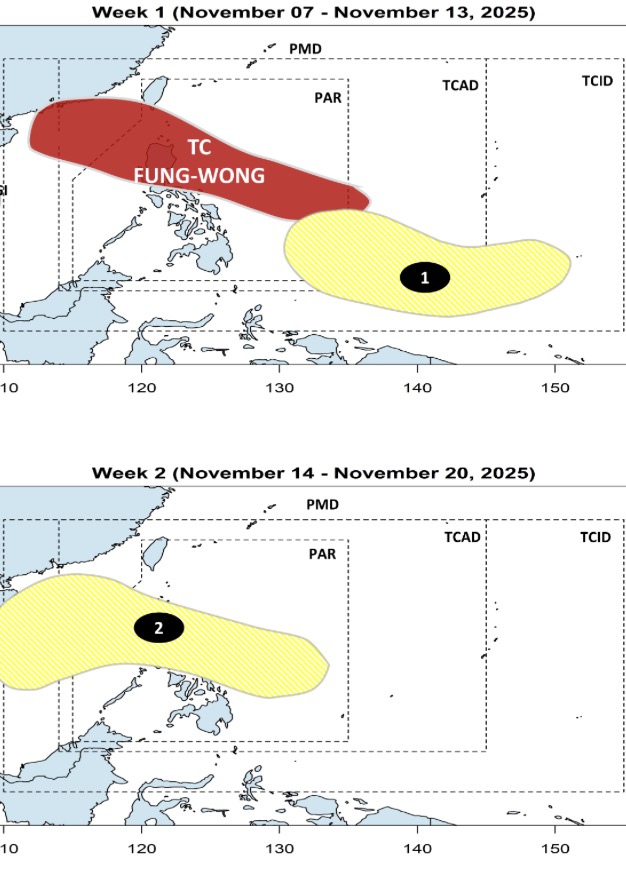The latest storm and low pressure forecast from the Philippine Atmospheric, Geophysical and Astronomical Services Administration (PAGASA) said that a new low pressure is expected to form after Typhoon Fung-wong (called Uwan in the Philippines) during the week from November 7 to November 13.
During this period, Typhoon Fung-wong made landfall in the Philippines, in the North - Central Luzon area. The new low pressure is expected to form within PAGASA's TCLV forecast area.
This low pressure near the Philippines is forecast to move towards the eastern boundary of the TCAD forecast area and enter the Philippine Forecast Area (PAR) during the forecast period.

The low pressure immediately following Typhoon Fung-wong is said to be unlikely to strengthen into a storm or tropical depression during the week of November 7 to November 13.
Forecasters in the Philippines also said that this new low pressure may continue to operate until the week of November 14 to November 20.
During this period, the low pressure will make landfall in Eastern Visayas - Southern Luzon then enter the East Sea, with the area affecting nearly Vietnam and there is still little chance of strengthening into a storm or tropical depression.
PAGASA's latest storm information on Typhoon Fung-wong on November 8 said that at 8:00 a.m. on November 8, Typhoon Fung-wong was 720km east-northeast of Guiuan, Eastern Samar, Philippines. The storm is moving west-northwest at a speed of 35 km/h. The storm's wind speed is up to 140 km/h, with gusts of 170 km/h.
PAGASA warned that Typhoon Fung-wong could quickly strengthen into a super typhoon on the evening of November 8 or early morning of November 9.
Typhoon Fung-wong is forecast to continue moving west-northwest until November 10 before turning north-northwest on November 11. According to the current track, the center of the storm could make landfall south of Isabela or north of Aurora on the night of November 9 or the morning of November 10.
After crossing the northern mountainous region of Luzon, Typhoon Fung-wong is expected to enter the South China Sea, becoming the 14th typhoon on the afternoon of November 10.











